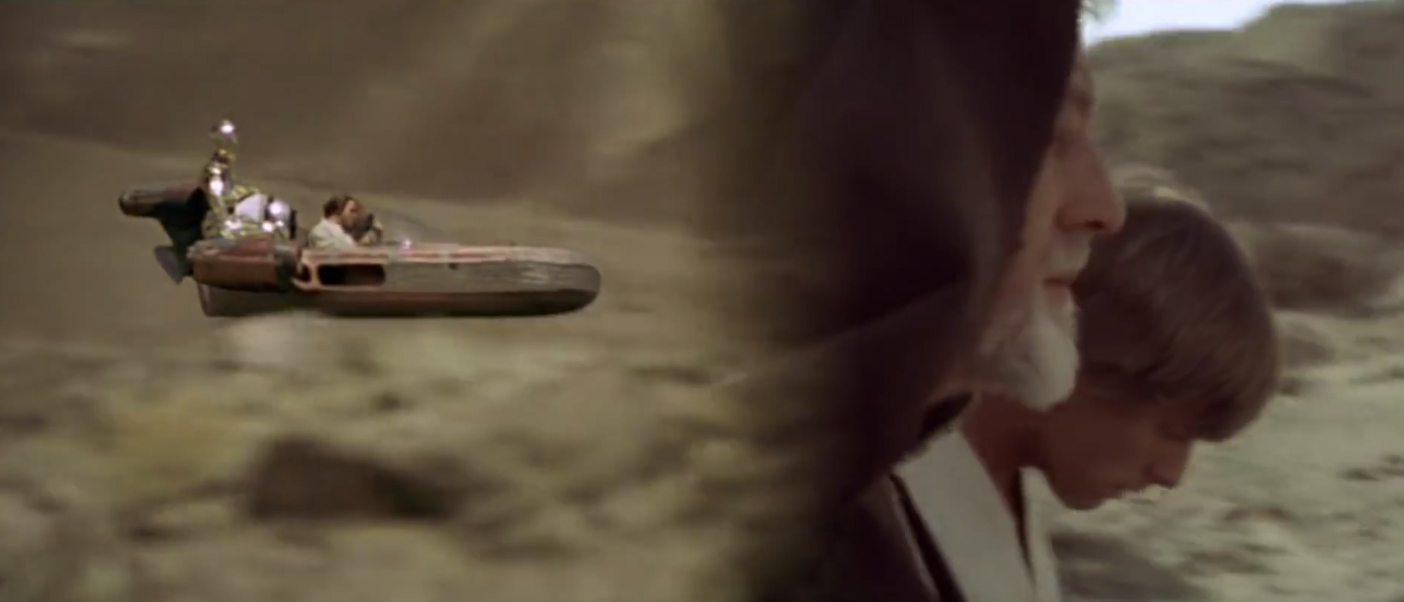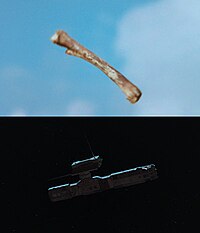Aspects of editing
Transitions
There are several different types of transitions in film. They transfer one shot to another. The most common one you will find is the jump cut where the shot ends and is instantaneously replaced with then next.
Fade
Where the proceeding shot fades into black from which the following shot emerges. It can show tiredness or a passage of time.

Dissolve or cross fade
The proceeding shot emerges into the following shot, resulting in two shots being super imposed.
It can show the association between a subject and another subject or a location.

Wipe
This is where one image is revealed over another horizontally, vertically, diagonally or even using a shape or pattern such as a diamond. It can show momentum and motion or can add to humour.

Pace & Rhythm
The duration of a shot can reflect the narrative context, conveying action and urgency in a car chase for example. For a slower paced and less intense scene shots will last longer. Longer lasting shots can convey intimacy within the narrative; it allows us to focus upon facial expressions and other aspects of Mise-en-scene.
Parallel editing
This is where two scenes (usually occuring at the same time) are both being shown on screen in different locations. If simultaneous then both scenes will culminate into one.

Match cut
A match cut is a cut from one shot to another where the two shots are matched by the action or subject and subject matter. It can show passing of time but the same relativity of a subject such as evolution of war jets.

Jump cut
Jump cuts are very common. They can be used in quick succession to create a rapid, tense scene through making the audience unable to focus on a single thing and create confusion. Also they simply show that time is progressing as the shots are straight after each other.
Fade
Where the proceeding shot fades into black from which the following shot emerges. It can show tiredness or a passage of time.

Dissolve or cross fade
The proceeding shot emerges into the following shot, resulting in two shots being super imposed.
It can show the association between a subject and another subject or a location.

Wipe
This is where one image is revealed over another horizontally, vertically, diagonally or even using a shape or pattern such as a diamond. It can show momentum and motion or can add to humour.

Pace & Rhythm
The duration of a shot can reflect the narrative context, conveying action and urgency in a car chase for example. For a slower paced and less intense scene shots will last longer. Longer lasting shots can convey intimacy within the narrative; it allows us to focus upon facial expressions and other aspects of Mise-en-scene.
Parallel editing
This is where two scenes (usually occuring at the same time) are both being shown on screen in different locations. If simultaneous then both scenes will culminate into one.

Match cut
A match cut is a cut from one shot to another where the two shots are matched by the action or subject and subject matter. It can show passing of time but the same relativity of a subject such as evolution of war jets.

Jump cut
Jump cuts are very common. They can be used in quick succession to create a rapid, tense scene through making the audience unable to focus on a single thing and create confusion. Also they simply show that time is progressing as the shots are straight after each other.
Comments
Post a Comment